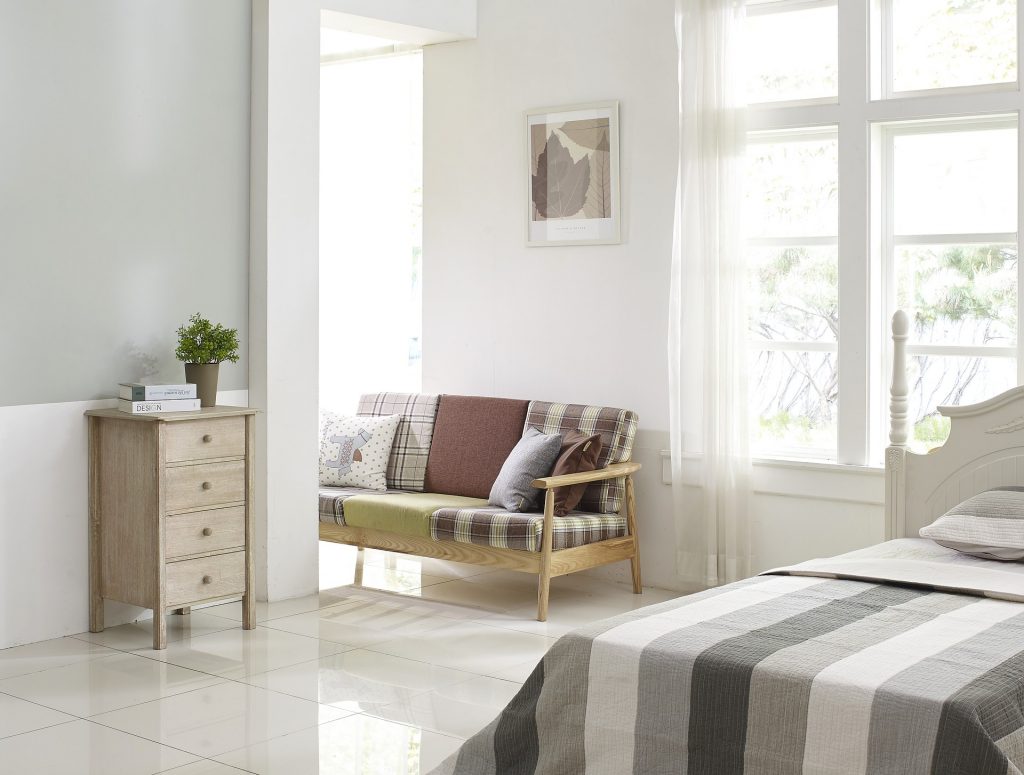We’ve all got those annoying friends whose houses always look spectacular, even when they don’t seem to put any effort in. If you can’t seem to pull the look together no matter how hard you try, it could be because you’re falling foul of some basic mistakes that are preventing a good finished result.
Here’s what to look out for and how to avoid common interior design mistakes!
1. Lighting
You can’t have a good result with bad lighting, it’s as simple as that. Harsh, overhead lights, strip lighting or lights that cast strange shadows are all no nos. Make the most of any natural light in the room, use mirrors to reflect it and use mood lighting, table lamps and standard lamps to create soft pools of light in dark corners.
2. Be true to yourself
We all love flicking through interiors magazines and envying the glossy interiors, but you don’t need to jump on every trend bandwagon. Some trends need certain spaces, colours or lighting to work, or just won’t be practical for everyone. Update a tired interior by picking and choosing the odd piece from your favourite trends rather than changing your whole decor.
3. Let go
Most of us have pieces of furniture of accessories that have sentimental value, or that were very expensive but are now outdated. If you no longer love something, or it’s no longer serving a purpose, think about getting rid of it – you’ll feel better, and it will help stop clutter building up. Think about selling unwanted items and buying something you really love with the money.
4. Banish bland
If you’re ‘doing over’ a whole room, a common mistake is to replace everything in it – new paint on the walls, new curtains, new furniture. This can look a bit soulless and ‘showroomy’, so mix things up with a few vintage finds to reflect your personality.
5. Stick to a budget
If you’re revamping a whole room, think about what you want to spend and the look you want to achieve. Where will you need to spend money, and where can you cut corners? For example, you might have to spend hours searching online for that curtain fabric you like at a bargain price, but the money saved might pay for the chairs to be upholstered too.
6. Be picture perfect
Artwork on the walls – whether it’s photos, pictures or wall hangings – is vital in giving the room its character. A common mistake is to hand all the artwork at about the same height, which looks uniform and contrived. Play with the levels to make it look interesting, and don’t feel you have to fill every blank space as it could look fussy. If you’re hanging a lot of pictures, it’s well worth making some mock ups with pieces of coloured paper cut to the right size and stuck to the wall, so you can see how sizes work together.
7. Keep your focus
Every room needs a focal point, which the rest of the space works around. Living rooms are easy, as the focal point tends to be either the TV or the fireplace. Other rooms can offer more of a challenge. A common mistake is to try to have more than one focal point, which is confusing. Think about what the room’s function is, and choose something that reflects the personality of the space – a beautiful mirror, a table, two armchairs – to create a cohesive whole. If there’s no one focal point, use a cohesive theme running through the room – a colour or texture that’s picked up in multiple ways.
8. De-clutter the sofa
I have a ‘thing’ for throw cushions, and if I’m not careful my sofa and chairs would be so full of cushions they’d be impossible to sit on! Cushions are an easy way of updating a colour scheme or dipping a toe into a current trend, but remove old cushions first before adding new ones. Replacing just the cushion covers is an economical way of getting a new look, and the old cushion covers can be easily stored or recycled into other projects.
9. Plan, plan, plan
If, like me, you love rummaging in vintage shops and going to salvage fairs, it’s easy to get carried away with impulse buys. Several times I’ve brought things home to realise they were the wrong size/colour/shape, or I just didn’t like them once they were in place. Save the budget to spend on things you know will work, and if you’re looking for something specific take a note of dimensions and colour swatches with you.
10. Keep it simple
When re-planning a whole room, most of us choose the paint colour first and paint the walls, then build the rest of the room around it. In fact, it’s much easier to choose a fabric you like first – you’re most likely to be able to find a paint colour to go with it, and if not you can always have one mixed up.
(Images via Pixabay)






Some really interesting points here! I am so bad for picking things up on a whim and then having to hope/see if they work so I think your ‘plan’ point is very true!
I love these tips. I am going through a re-vamp of our family room and I will implement some of these! Thank you.
I never considered myself into interior design until I bought a cafe recently. Some great tips here, wish I’d have seen this before I started!!
Great tips, I’m decorating my home and will take these on board